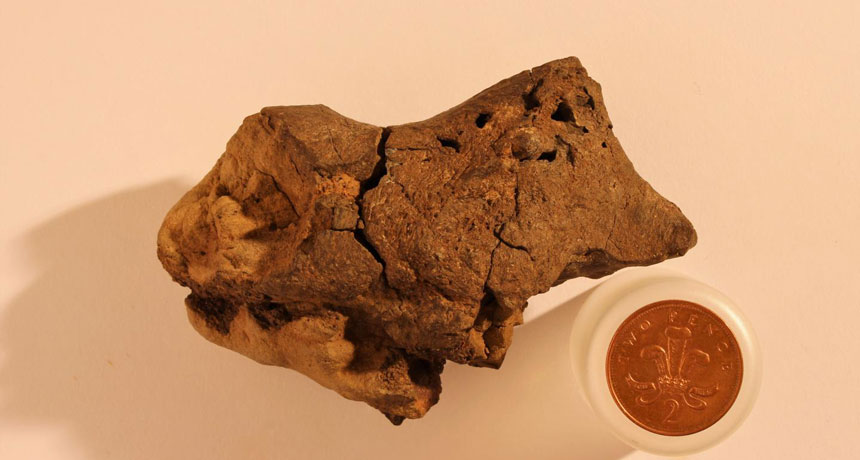First known fossilized dinosaur brain unearthed, scientists claim
Fall into swamp probably helped preserve tissue

DINO BRAINS A fossilized chunk of bone and brain belonged to an herbivorous dinosaur that lived roughly 133-million-years ago. A British two-pence coin, about the size of a U.S. quarter, is shown for size.
Jamie Hiscocks